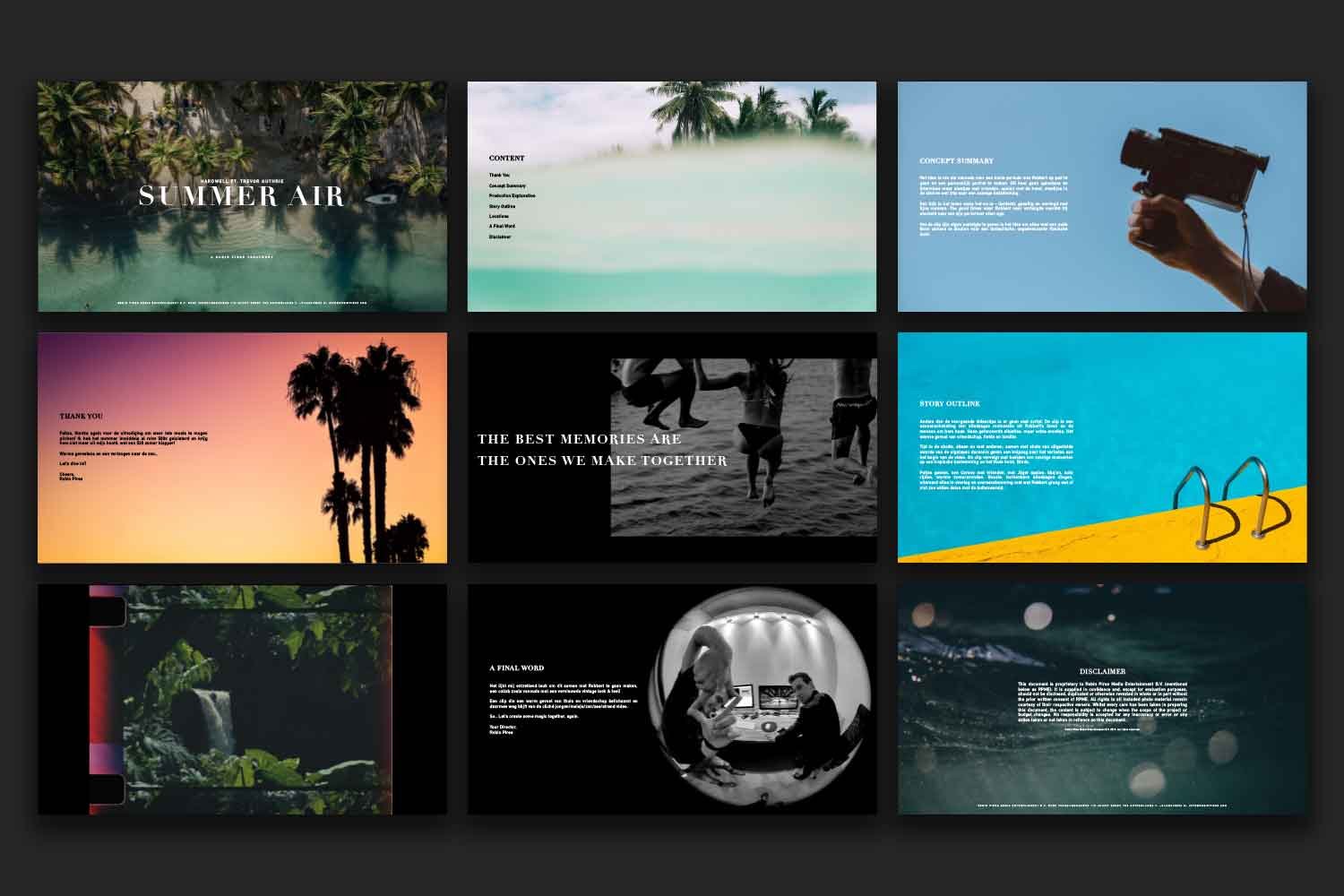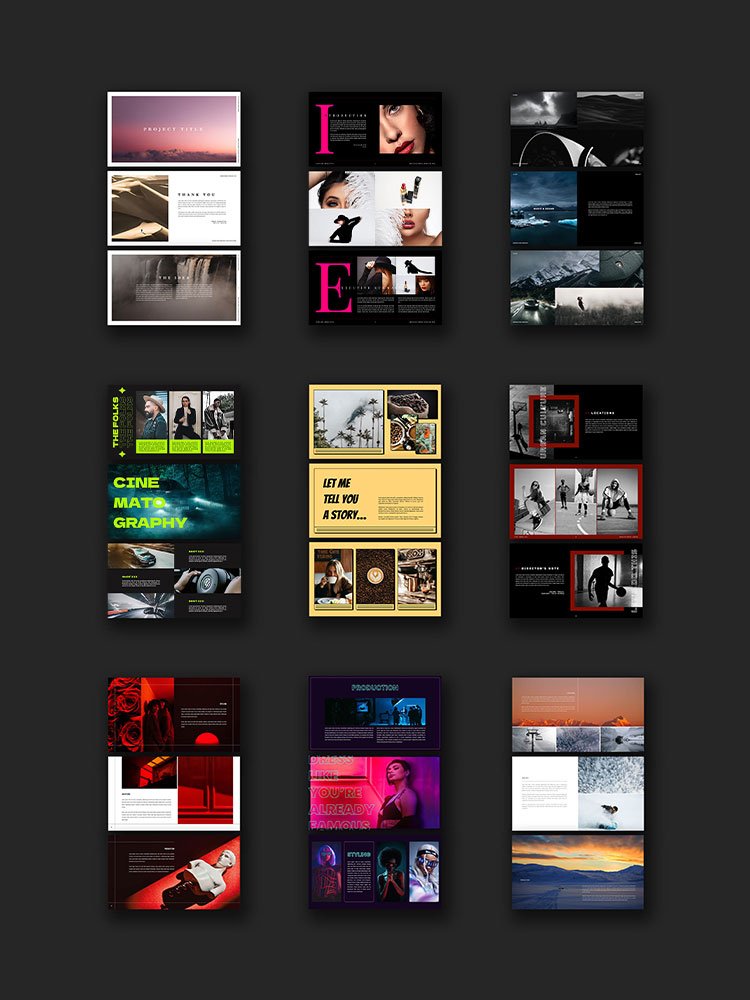5 Useful Tips For Writing Better Video Treatments
When it comes to getting work as a director for commercials, music videos, short films, fashion films, and many other types of (online) content, video treatments (or director treatments) are one of the tools that will help you land the gig.
These digital pitch documents help you sell your filmmaker’s vision and give your client a better understanding of how you want to bring the project to life.
I know firsthand that the hardest part of creating these visual mediums is not finding visual references and making it visually appealing but outlining how you want to bring that project to life.
To help you with this, I’ll share five tips for writing better video treatments so you can increase your chances of winning your next project!
Table of contents:
Tip #1 - Use simple language
My first tip for writing better video treatments is to use simple language. This doesn’t mean you need to write simple story ideas but present your ideas in an easy-to-understand way. The simpler your writing, the easier it is for everyone to understand what you have in mind.
Write the video treatment for a 12-year-old.
Using simple language in the creative process is essential because sometimes you don’t know who the audience of your video treatment will be.
It might be a junior creative, someone who has never worked on a film project before, or an upcoming 18-year-old superstar in whom the music label wants to invest some serious money.
Their eyes and minds are not trained on the same level as yours when communicating visual ideas. You sometimes are pitching a creative idea in a creative way to a not-so-creative person.
To ensure they understand your creative thoughts, use words a 12-year-old can understand. Write as if you explain your vision, concept, or interpretation to your little brother, sister, niece, nephew, or the kids next door.
It’s tempting to use sophisticated language and filmmaking jargon to convey what you have in mind in your video treatment.
This is the so-called curse of knowledge, but that will not help you win the job. People ask you to pitch because of your visual taste, portfolio, and personality, not your rich vocabulary.
Only level up if necessary.
The only reason you sometimes need to level up your wording in your video treatment is when your potential client requires a certain level of sophistication—for example, pitching for a high-end luxury brand or a five-star hotel.
You want to use elegant wording in those pitches to let your potential client know you’re on the same level as they are.
To find the best words for those video treatments, I use a free online tool called WordHippo. It provides all kinds of grammar solutions like synonyms, antonyms, rhymes, sentences, translations, and pronunciations.
Tip #2 - Avoid overusing references
My second advice is to be careful with name-dropping and reference other people’s work in your video treatment.
You might mention the names of your favorite Hollywood directors and the movies they’ve made in your video treatment, but your audience might not know them.
I do not appreciate reading something packed with movies, songs, or book references, and people assume you know what they’re talking about.
They dedicate dozens of words to how brilliant their references are without explaining how it correlates to the message they are trying to convey.
You want to be equal.
People do the same thing in daily conversations: “Wow, you don’t know that?! Huh, how come you haven’t seen this?! You never heard about that?!” My advice is don’t go there.
You should avoid doing that because you unconsciously place yourself above someone else. You act like you know something they don’t, which makes the other person feel left out.
You want to be equal and on the same level when pitching your story ideas via video treatments. Mentally positioning yourself above someone else by acting like you know something they don’t is the right starting point for a collaboration.
It should be a collaborative experience, not an ego trip.
Give the context of your reference.
If you do decide to incorporate specific references, explain them. Give them some context, describe them, and explain why it’s relevant to the brief so everyone can follow you.
It’s OK to refer to occasionally, but you need to give it some context. Make it understandable for someone that isn’t familiar with the reference.
Discover a wide range of fully customizable treatment templates to help you support your vision and make your digital document look as beautiful and professional as possible!
Tip #3 - Just be you
Irish writer Oscar Wilde once said: "Be yourself. Everyone else is already taken." Your biggest sales tool is the stuff that's between your ears—your experience, expertise, and your personality.
A video treatment is very much about making your unique value come across. The best way to do that is by being yourself.
Write as you talk
Write your video treatment as if you would tell your idea to your best friends. Most of the time, you’re pitching to talented young people who are very much like you. It doesn’t make sense to write a formal text the same way you’d write a corporate document.
What does work is just to be yourself and write in a way that flows naturally for you. Let your personality shine through, and embrace that you’re different from everybody else.
Don’t be afraid to be weird! That is what makes you, YOU!
Try different headers
You can try to work with different header titles for the various chapters in your document. For example, don’t use the standard chapter title ‘Casting,’ but try ‘The Folks.’
Instead of ‘Sound,’ try ‘That Sounds Like Music To Me!’ Instead of ‘Cinematography,’ try ‘Picture This!’
Sometimes you can be one of many other filmmakers pitching for the opportunity. When you mix it up a bit, it will help to make your video treatment stand out from the rest.
Tip #4 - Use present tense
Your video treatment should take the reader by the hand and guide them through whatever you want to convey. The best way to do that is by writing in the present tense, representing the here and now.
This means that no matter in what period your story takes place, whether past or future, describe events as they happen.
Avoid using ‘we’ in your video treatment.
While describing things in the present tense, avoid using ‘we.’ I’ve seen many video treatments and client briefs describing what happens with sentences like: “We see the characters do this, we start the video with this, then we do that.” It makes no sense to write in a ‘we’ form.
Who is ‘we’? You and I? You and the audience that will see the video? You and your film crew creating the video? The agency and their client?
Instead of saying: “We start the video with,” use: “The video starts with.” Turn: “We see the characters do this and that” into: “The characters do this and that.”
It’s a simple nuance, but I believe it enhances the quality of the story you’re trying to tell and keeps the reader engaged from a story point of view.
Tip #5 - Use personal anecdotes
As I mentioned, your biggest sales tool is the stuff between your ears. Therefore it's crucial to make your video treatment as personal as possible, and nothing makes a video treatment more personal than adding personal anecdotes into the mix. Not just random holiday stories but stuff that resonates with the material.
Injecting your personality in your video treatment by adding specific experiences and personal anecdotes relevant to the brief is a simple tool to help show that you have a connection with the project on the table.



































